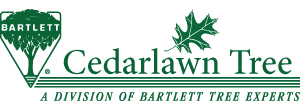Cottony Taxus Scale
One of the more common scale insect pests seen in landscapes here in the Notheast is cottony taxus (cottony camelia) scale. This insect is easiliy recognized due to the cottony white appearance of egg-laying, adult females. The adult females produce a long (<1/2”), narrow band of a cottony looking substance (egg sac) that houses and protects the eggs produced. The female scale dies after egg laying- the cottony material on leaves will slowly dull in color and fade away over the course of the year. Cottony taxus scale is most commonly found on yews and hollies in this area. The insect tends to populate the undersides of leaves/needles. Cottony taxus scale is a soft scale (produces a thin, waxy outer covering attached to insect) as opposed to a hard scale (produces a harder, outer shell not attached to the insect). Soft scales feed in vascular components of plants. Due to the sugary matrix contained in these plant structures the insects produce honeydew (sticky, sugary excrement) that is commonly colonized by sooty mold fungi that in turn produces a black coating. This black coating on infested plants is usually what people notice first when examing plants and is a clue insect feeding is occuring on or over the plants examined. Heavy feeding can reduce plant health and the black sooty mold decreases the aesthetic appeal of plants.
The eggs of cottony taxus scale hatch in June here in the Northeast and the “crawlers” (small, mobile immature stage of the insect) that arise from the eggs move briefly around the plant until they settle down to feed via their mouthparts. These crawlers are very small and magnification (e.g. hand magnifying lenses) is needed to observe their presence. Control of the insect can be obtained by sprays at this crawler stage of their life cycle. Dormant oil sprays in April are also effective as this insect overwinters on plants in an immature form. Alternatively, subsurface applications of an appropriate insecticide labeled for control of the insect via this methodology can also be employed.
Cottony azalea scale is another soft scale insect that is most commonly found here in the Northeast on rhododendrons, azaleas and Pieris species. This insect can be mistaken for azalea bark scale that also can be found on the above mentioned plants. Cottony azalea scale has much more of a “cottony” appearance and during the egg-laying stage will appear much larger than azalea bark scale. Azalea bark scale, in our experience, will cause plant decline faster that cottony azalea scale.The life cycle of these scales and controls are similar to cottony taxus scale.






